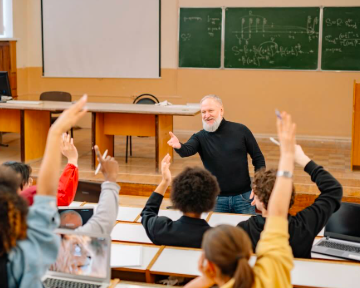ChatGPT, a conversational AI developed by OpenAI, has quickly become a powerful tool in educational settings. From enhancing student learning to supporting educators with planning, this technology can be a valuable companion in both traditional and online classrooms. Here’s how you can use ChatGPT effectively in education without crossing into policy-sensitive areas.
1. Supporting Personalized Learning
Every student learns at a different pace. ChatGPT can offer explanations, summaries, and step-by-step guidance tailored to each learner’s needs. Whether it’s helping a student understand a complex math problem or offering writing tips, AI can adjust to individual learning styles in real time.
2. Helping with Study Planning
Students juggling multiple subjects and deadlines can use ChatGPT to build structured study schedules. The tool can help organize tasks, suggest timelines, and even provide daily learning goals — all in simple, conversational language.
3. Enhancing Writing and Editing
ChatGPT is a handy assistant for improving grammar, sentence clarity, and structure. Whether it’s a short essay or a research paper draft, learners can get suggestions for rewriting awkward sentences or improving tone without relying on plagiarized material or shortcuts.
4. Assisting Educators with Lesson Prep
Teachers can save time by using ChatGPT to brainstorm lesson ideas, draft quiz questions, or summarize educational resources. It’s also great for generating icebreaker questions or discussion prompts for virtual classrooms.
5. Encouraging Critical Thinking
Instead of giving direct answers, educators can use ChatGPT to model Socratic questioning. For example, the AI can present multiple viewpoints on a historical event or ask follow-up questions that prompt students to analyze and evaluate their own thinking.
6. Language Learning and Practice
For language learners, ChatGPT can act as a patient conversation partner. Students can practice vocabulary, grammar, and pronunciation (through written transliteration) in a low-pressure environment, making learning more engaging and accessible.
7. Exploring Safe Research Guidance
While ChatGPT shouldn’t replace peer-reviewed sources, it can guide students on how to structure research, where to begin, and how to refine questions. This encourages students to explore reputable sources on their own with more confidence.
Final Thought
Using ChatGPT in education should always complement — not replace — human guidance. When integrated thoughtfully, it supports personalized learning, increases productivity, and encourages curiosity. Most importantly, educators and students should ensure ethical use by avoiding dependency and valuing critical thinking over instant answers.






